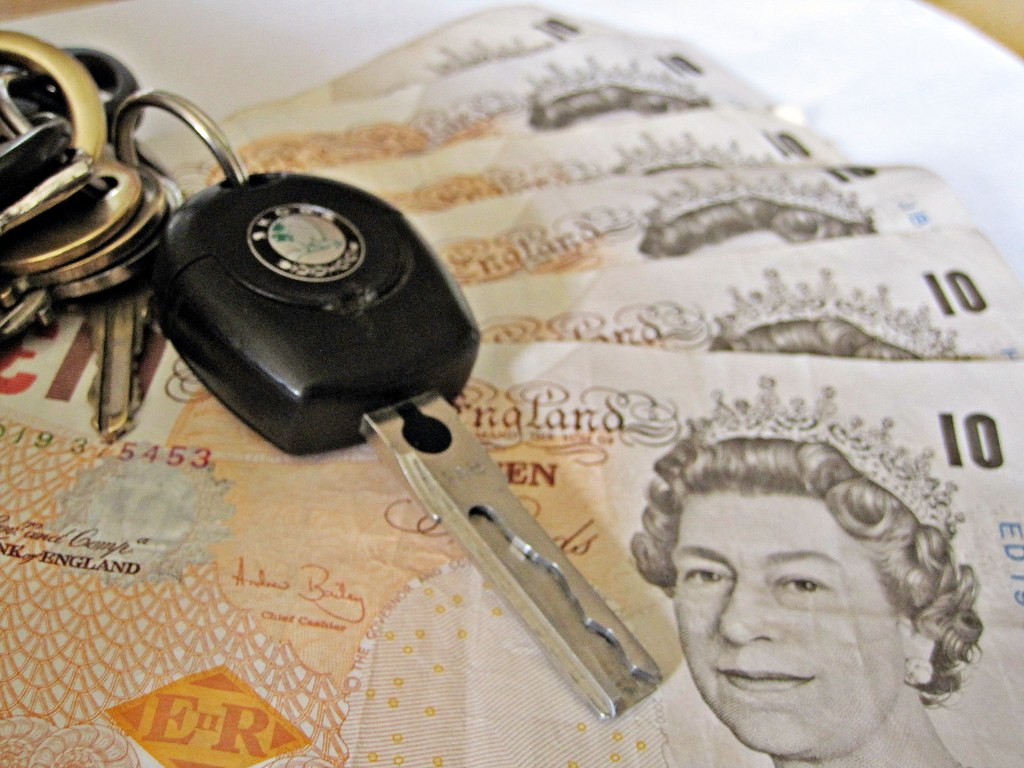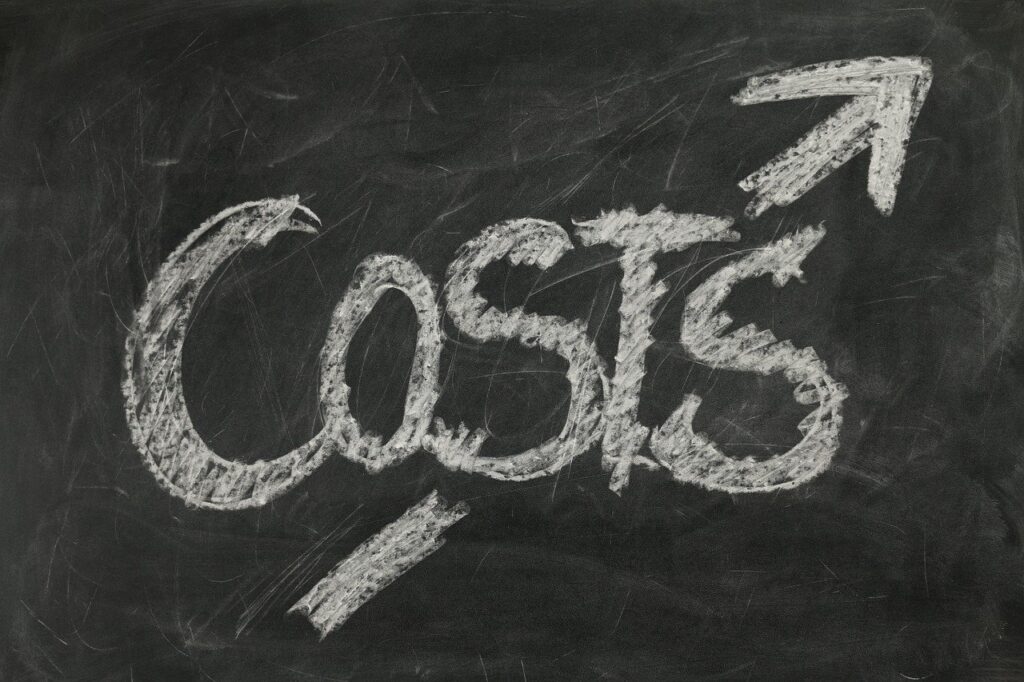
In today’s complex financial landscape, taking command of your money is more crucial than ever. A budget isn’t just a dry ledger of numbers; it’s a powerful tool, a methodical plan designed to give you clarity and control over your income and expenditure. It’s about consciously directing your funds instead of watching them disappear, ensuring you’re making intentional choices that serve your financial well-being.
At its heart, budgeting empowers you to reach specific financial goals, whether that means meticulously paying off lingering credit card balances, hitting a significant savings milestone, or simply getting your income and expenses back on track. With numerous methods and modern digital tools available, the key is to find an approach that resonates with your personal habits and financial situation, one you’ll genuinely stick with over time.
This in-depth guide will walk you through the foundational elements of personal budgeting, from understanding what a budget truly is to exploring various popular systems. We’ll uncover how to gather the essential financial data needed to build an effective plan and delve into structured approaches that can help you organize your spending and pave the way for a more secure financial future.

1. **What is a Budget? Redefining Your Financial Blueprint**A budget is fundamentally an estimate and planning of income and expenditure. It is commonly referred to as a methodical plan to spend money a certain way, offering a structured approach to managing your finances rather than allowing money to haphazardly flow in and out. This deliberate planning is the first step towards regaining control and making informed decisions about your financial life.
Generally, budgets are created to reach certain financial goals. These goals can range widely, from paying off several credit cards to achieving a specific savings target, or simply getting your income and expenses back on track. The purpose is to align your daily spending with your long-term aspirations, providing a roadmap for every dollar you earn.
A budget offers several significant benefits for anyone looking to improve their financial health. It helps you take control of your money by providing a clear picture of where it goes, which in turn allows you to make informed decisions. By identifying areas where you can spend less, a budget helps you save money, enabling you to work towards bigger financial objectives. Furthermore, finances are a common source of stress, and using a budget can significantly reduce this anxiety by helping you feel more in control of your money, fostering a sense of calm and confidence in your financial future.
Remember that the best budget is always the one that works for you. There are many different reasons why people create budgets, and even more ways to go about doing so. Whether you prefer a physical worksheet or a sophisticated app, the tool’s effectiveness ultimately depends on your commitment to adhering to your plan and making adjustments as needed.

2. **Gathering Key Financial Information: The Foundation of Your Budget**Before you can effectively design and implement a budget, it’s essential to gather some key financial information. This preliminary step is crucial for creating an accurate and realistic plan, ensuring that your budget is built on solid data rather than guesswork. Having all of this information ready will make calculating your budget much smoother and more accurate.
Your take-home pay, or your monthly income after taxes, is the first piece of information you’ll need. This is the net amount of money you actually receive and have available for spending and saving. A pay stub will likely be the easiest place to find this information, providing a clear figure to start your budgeting calculations.
Next, identify your fixed expenses. These are the recurring costs that tend to stay the same each month, providing a stable baseline for your spending. Examples include housing and utility payments, insurance premiums, debt or loan amounts, child care costs, memberships, and other consistent bills. Checking account statements is an excellent way to find these recurring charges and their precise amounts, ensuring you don’t overlook any commitments.
In contrast to fixed expenses, you’ll also need to account for your variable costs. These are expenses that, as the name suggests, change every month based on your consumption and choices. Common examples include groceries, gas costs, shopping, dining out, travel, and entertainment. To estimate your spending in these flexible categories, you can look back at past transactions over a few months to identify your average expenditure.
Finally, be sure to include all your debts, including interest, in your monthly budget. This encompasses credit card debt, medical debt, and other kinds of loans or liabilities. Fully understanding your debt obligations is vital for creating a budget that effectively addresses repayment and prevents further accumulation, moving you closer to financial freedom.
Read more about: The Gears of Time: Unearthing 14 Criminally Underrated Rides That Deserve Their Moment in the Sun

3. **The 50/30/20 Budget Rule: A Popular Framework for Spending**One of the most widely recognized and approachable budgeting systems is the 50/30/20 rule. This framework provides a clear and straightforward guideline for how to allocate your income, simplifying the often-overwhelming task of managing personal finances. It suggests a specific breakdown for your monthly take-home pay to help you balance immediate needs with future goals.
The 50/30/20 rule proposes that 50% of your income should go toward needs, which are essential expenses you cannot live without, such as housing, utilities, and groceries. Following this, 30% is allocated toward wants—discretionary spending that enhances your lifestyle but isn’t strictly necessary, like dining out, entertainment, or subscriptions. The final 20% is earmarked for savings and debt repayment, crucial for building wealth and reducing financial burdens.
When using a budget planner or template, you’ll typically add your monthly income, expenses, and any contributions to savings or debt repayment. The tool will then often show how your spending aligns with the 50/30/20 budget. This visual representation helps you quickly identify if your allocations are within the suggested percentages or if adjustments are needed to meet the framework’s recommendations.
It’s important to view the 50/30/20 budget less as a strict, inflexible rule and more as an ideal to work toward. While it provides excellent guidance, individual circumstances may necessitate temporary deviations. The goal is progress, not perfection, and even if you don’t hit the exact percentages immediately, striving towards them offers a reliable path to financial stability and greater control over your money.
Read more about: Your Essential Roadmap to Financial Control: 14 Practical Budgeting Strategies for Savvy Spenders

4. **The 60/30/10 Budget: An Adaptable Alternative**For those who appreciate structured spending guidance but find the 50/30/20 budget to be a bit out of reach due to current financial realities, the 60/30/10 budget offers a practical and adaptable alternative. This method acknowledges that not everyone has the same financial flexibility, especially when dealing with lower incomes or higher costs of living.
This framework allocates a larger portion of income to needs, specifically 60%, recognizing that essential expenses can consume a significant part of one’s earnings. The allocation for wants remains the same at 30%, allowing for some discretionary spending. However, the portion for savings is reduced to 10%, making it a more feasible starting point for individuals who need to prioritize immediate essentials.
While ideally, budgeters would work up to contributing more than 10% to savings as their financial situation improves, this initial lower percentage is simply not feasible for some. The 60/30/10 framework may work particularly well for those with lower incomes, individuals living in higher cost-of-living areas where essentials consume more, or anyone who currently needs to prioritize necessities over a larger savings contribution.
To illustrate, consider a monthly take-home pay of $3,000. With the 60/30/10 budget, you would devote $1,800 to needs (60%), $900 to wants (30%), and $300 toward savings (10%). This contrasts with the 50/30/20 breakdown, which would allocate $1,500 for needs, $900 for wants, and $600 for savings. The higher allocation to needs in the 60/30/10 model provides crucial breathing room for many households.

5. **Zero-Based Budgeting: Giving Every Dollar a Purpose**People who consistently overspend or who prefer a meticulous approach to tracking their cash flow may find significant benefits in a zero-based budget. Unlike broader guidelines such as the 50/30/20 or 60/30/10 frameworks, which offer percentages for categories, the zero-based budget demands a much higher level of specificity and intentionality with every single dollar of your paycheck.
The core principle of this approach is to give every single dollar in your budget a purpose until you end up with zero dollars remaining. This doesn’t mean your bank account literally hits zero, but rather that every cent of your income for the month has been assigned to a specific expense, saving goal, or debt repayment. It ensures no money is left unaccounted for, preventing leakage and unintentional spending.
For example, if your monthly take-home pay is $3,000, a zero-based budget would require you to make a precise plan for every bit of that money. You would allocate specific amounts to housing, groceries, debt payments, savings, and so on, until the sum of all your allocations equals exactly $3,000. If, after covering all your essentials, you find you have $200 left unassigned, you would then give that money a clear purpose, perhaps by putting it toward entertainment, dining out, or an additional savings contribution.
This method fosters incredible financial discipline, as it forces you to consciously decide where every dollar goes before the month even begins. It’s particularly effective for those who want to be hyper-aware of their spending and ensure their money is always working towards their defined financial objectives, preventing any funds from slipping through the cracks.
Read more about: Your Essential Roadmap to Financial Control: 14 Practical Budgeting Strategies for Savvy Spenders

6. **Cash Envelope Budget: A Tangible Approach to Spending Control**Similar in its meticulousness to the zero-based budget, the cash envelope system offers a highly effective method for those who struggle with impulse spending and desire a tangible way to control how much they spend. While the zero-based budget appeals to planners, the envelope system is often lauded for its immediate impact on curbing overspending in variable categories.
With the cash envelope system, you begin by allocating a set amount of money to each flexible spending item in your budget, such as groceries, dining out, or entertainment. You then physically create envelopes – or virtual ones through a budgeting app – for each of these categories and stuff the predetermined amount of cash into them. The critical rule is that once an envelope is empty, you cannot spend any more money from that category until the next budgeting cycle.
This system provides an immediate and undeniable visual cue of your spending limits, making it incredibly difficult to overspend. When you physically hand over cash, you are more acutely aware of the transaction and the diminishing funds in your envelope, a psychological deterrent to impulse purchases that electronic payments often lack.
Consider our example of a $3,000 monthly income. You might literally (or virtually) put a certain amount of money into envelopes assigned to various categories. If you allocated $100 to your dining out envelope and have already spent $90, seeing only $10 left provides a clear signal. You would then know definitively to skip those dinner plans, or opt for a much cheaper alternative, because the funds are simply not available until the next month, fostering real-time accountability for your spending.
Read more about: Your Essential Roadmap to Financial Control: 14 Practical Budgeting Strategies for Savvy Spenders

7. **Pay-Yourself-First Budget: Prioritizing Future Prosperity**Also known as reverse budgeting, the pay-yourself-first system embodies a powerful philosophy: securing your future financial goals before allocating funds to other priorities. This method is a strategic shift from traditional budgeting, where savings often come last after all other expenses are accounted for. Here, the emphasis is firmly placed on long-term wealth building and financial security from the outset.
Pay-yourself-first budgeting involves tucking away money for crucial long-term objectives such as savings, investing, and debt repayment at the very beginning of your pay cycle. This means that as soon as your income arrives, a portion is immediately transferred to your savings accounts, investment vehicles, or directed towards accelerating debt payments. The rest of your money can then be allocated to other priorities, like bills or leisure, with the comfort of knowing your future is already being secured.
This can be an ideal system for people who want to prioritize long-term goals without necessarily accounting for every penny of their remaining income, as might be required with a zero-based budget. While discipline is still required for the initial allocation, the subsequent spending of the remaining funds doesn’t need to be as meticulously tracked, offering a sense of freedom once your foundational financial security is established.
To put it into perspective with a $3,000 monthly income, the first thing you would do is stash, for instance, $300 for your IRA and $100 for your emergency fund. This allocation happens before any other bills are paid or discretionary spending occurs. As for the rest of your $2,600, you would budget as you wish, managing your fixed and variable expenses, but likely wouldn’t be as meticulous as with the zero-based or envelope systems, as the most critical financial moves for your future have already been made.
Ultimately, remember that the best budget is truly one that works for you. Financial situations are dynamic, and what works today might need adjustment tomorrow. Take time to tweak your approach and modify your spending as needed until you reach your ideal budget, recognizing that consistency and adaptability are paramount for long-term financial success. If you find yourself consistently struggling to make a budget a reality, or to get a handle on your finances, it may be beneficial to explore other options, such as seeking expert financial advice or resources that can provide additional support and guidance.
Read more about: Your Essential Roadmap to Financial Control: 14 Practical Budgeting Strategies for Savvy Spenders

8. **Living Within Your Means: The Immutable Rule of Budgeting**The cornerstone of any successful financial plan, living within your means signifies that your expenditures should never consistently exceed your income. While straightforward in theory, many struggle with its implementation, as evidenced by statistics showing significant debt accumulation, often from spending more than they earn. This principle is fundamental for lasting financial health.
Failing to adhere to this rule often stems from common pitfalls. A primary cause is simply spending more than available income, which inevitably leads to a snowballing effect of debt. Another significant factor in consumerist societies is ‘keeping up with the Joneses,’ where individuals acquire luxury goods to publicly display economic power, often at the expense of their financial stability.
Over-reliance on credit further exacerbates this issue. While credit offers temporary flexibility, allowing people to live beyond their current means, borrowed funds must be repaid promptly to avoid substantial interest and escalating liabilities. Additionally, a lack of personal finance knowledge or misinformation can lead individuals to inadvertently live outside their means, underscoring the necessity of ongoing financial education for greater control.
Read more about: Unlock Your Financial Potential: A Comprehensive Guide to Budgeting Methods That Actually Work

9. **Planning for the Future: Building a Foundation for Financial Security**Beyond managing present-day spending, effective budgeting is fundamentally about planning for the future. Just as corporations forecast, individuals must apply the same foresight. Successful achievement of financial goals, whether short-term or long-term, is significantly hampered without a deliberate and strategic plan guiding future financial standing.
Proper financial planning empowers individuals to predict their future financial landscape based on estimated income and expenses. This proactive approach helps mitigate the impact of sudden misfortunes, both expected and unexpected, by guiding the allocation of funds to build essential emergency savings. A robust emergency fund creates a vital buffer against unforeseen financial shocks.
Furthermore, future planning through budgeting is crucial for navigating heavy-debt seasons, enabling systematic reduction of liabilities. It prepares for significant milestones like a new home or car purchase. Critically, it provides a framework for managing investments, preparing for retirement, funding children’s education, and ensuring appropriate insurance, all contributing to robust, long-term financial health and peace of mind.
Read more about: Unveiling the Powerhouse: Exploring the Foundational Strengths Behind America’s Advanced Naval Capabilities

10. **Maximizing Your Income Streams: Fueling Your Financial Goals**While diligent expense management is paramount, understanding and optimizing your income streams is equally vital for achieving financial freedom. For most, primary income comes from full-time or part-time employment. However, a comprehensive budget acknowledges multifaceted income, with investments and capital gains forming a significant long-term source, alongside other potential additional funds.
A higher income inherently provides greater flexibility within a budget, offering more leeway to absorb expenses or recover from periods of extreme spending. While increasing income is challenging, it’s often pursued through actively seeking new, better-compensated job opportunities, attaining higher education or certifications, and continuously developing new skills. Networking can also unlock career advancements and earning potential.
For some, increasing income can stem from investment growth, typically yielding results over the long term. In situations where current income is insufficient to cover essentials and goals, a second job may be necessary to make ends meet and bolster financial capacity. Moreover, considering future income sources like Social Security in retirement, typically available from age 62, is part of a holistic financial plan.

11. **Controlling Major Fixed Costs: Housing, Utilities, and Transportation**Housing and utilities often represent the largest portion of a household’s monthly budget, primarily as rent or mortgage payments. A common guideline suggests housing costs should ideally not exceed 30% of monthly gross income. Individuals exceeding this benchmark may benefit from exploring more cost-effective living arrangements or strategies to reduce current expenses.
Strategies for reducing housing expenses include refinancing a mortgage to a lower rate or considering relocation to a more budget-friendly area or downsizing if feasible. Homeowners with spare rooms might generate rental income. Smaller, impactful savings come from transitioning to energy-efficient smart technologies, such as programmable thermostats and LED lighting, and even contemplating solar panel installation for long-term savings.
Transportation expenses constitute another major category, with car payments or auto loans typically forming the bulk. There’s considerable flexibility to reduce this expense by making informed vehicle purchase choices within a specific price range. A general rule suggests monthly car payments remain below 10% of gross income, and total transportation costs below 15% of income.
Cutting down on transportation expenses involves multiple avenues. In regions with robust public transport, foregoing car ownership in favor of public transit, carpooling, biking, or walking is both eco-friendly and budget-conscious. Opting for a fuel-efficient vehicle can significantly reduce gasoline costs. Regular vehicle maintenance ensures optimal performance, preventing costly repairs, and safe driving habits avoid fines and high insurance premiums, contributing to overall savings.

12. **Strategizing Debt Repayment: Unburdening Your Financial Future**Debt, especially from credit cards, often carries negative connotations due to its potential for overspending and high interest accumulation. It is crucial to internalize that credit cards are not an endless financial resource; they represent borrowed money that must be repaid diligently to avoid substantial interest and strain on a budget. Understanding and managing all forms of debt—credit card, medical, student, and personal loans—is fundamental to achieving financial freedom.
While mishandled credit cards exacerbate debt, when used under strict control, they can be a strategic tool. Responsible use offers benefits like rewards on purchases and builds positive credit history. However, for those with constrained budgets, it’s even more imperative to use credit cards sparingly, preventing large interest payments that destabilize financial plans.
When budgeting for debt, ensure accurate accounting, avoiding ‘double dipping’ expenses—not allocating funds twice for the same item. Accurately tracking recurring loan balances for student, personal, or credit card debt is key. For individuals burdened by multiple high-interest student loans, exploring consolidation options may streamline repayment and potentially lower overall interest rates, moving closer to financial liberation.

13. **Managing Daily Living Expenses: Food, Household, and Discretionary Spending**Daily living expenses, while individually smaller than major fixed costs, collectively form a substantial budget portion. Categories like ‘Food,’ ‘Meals Out,’ ‘Clothing,’ ‘Household Supplies,’ and ‘Other’ (including personal care, alcohol, tobacco) offer significant opportunities for budgetary improvement. The combined expense for ‘Food’ and ‘Meals Out,’ for instance, should ideally be kept below 15% of income.
One area with considerable ‘wiggle room’ for savings is ‘Meals Out.’ Cooking at home is significantly more cost-efficient than dining out. A conscious shift to preparing more meals at home, coupled with intentional planning like meal prepping and grocery shopping with a list, can lead to substantial reductions in living expenses. The financial benefits are often immediate and significant.
‘Miscellaneous Expenses,’ though a catch-all, represents the most pliable section of a personal budget. This category includes items blurring ‘needs’ and ‘wants,’ such as pets, gifts, hobbies, entertainment, and travel. While moderation eases financial stress, over-expenditure can derail financial goals. Decisions about lavish vacations or discretionary purchases directly impact saving. For anyone fixing a faltering budget, this section is a primary area for scrutiny and adjustment.
Read more about: Mastering Your Retirement Budget: Real-World Insights from a 65-Year-Old Retiree’s Monthly Spending Plan

14. **Investing in Tomorrow: Healthcare, Children’s Education, and Strategic Savings**Beyond immediate needs and debt management, a healthy budget prioritizes investments in future well-being, encompassing healthcare, children’s education, and strategic savings. Healthcare costs, particularly in the U.S. averaging around $10,000 per person annually, represent a significant and often less pliable expense. While broad reductions are challenging, proactive strategies can mitigate their impact.
Preventative measures such as maintaining a healthy lifestyle, avoiding smoking, and sufficient sleep can reduce medical needs. Financially, utilizing in-network doctors and facilities, regularly reassessing health insurance, and leveraging tax-advantaged accounts like Health Savings Accounts (HSAs) offer substantial savings. Opting for generic drugs is practical. For seniors, modifying home environments to reduce fall risks can prevent major, costly medical incidents.
Investing in education is a foundational investment, correlating higher degrees with increased income. This category is more about correct planning than scaling back. Many developed countries offer accessible student aid, ensuring educational opportunities. For budgeters with multiple high-interest student loans, exploring consolidation can streamline repayment and potentially lower overall costs. Similarly, raising children is a substantial financial commitment necessitating diligent planning.
Finally, allocating excess money to savings and investments is a hallmark of healthy budgeting. This includes retirement funds (401k, IRA), college savings, general investments, and critically, emergency funds. An emergency fund is decisive in avoiding debt during unforeseen life events. Effective management of savings and investments can enable earlier retirement and financial independence. A general recommendation for this combined section is to aim for 15% or higher of one’s income, ensuring a robust foundation for future prosperity.
Ultimately, the journey to financial freedom is deeply personal and rarely linear. The various budgeting systems and expense management strategies outlined in this guide provide a robust toolkit, but their true power lies in consistent application and ongoing adaptation. Your financial situation is dynamic, and what works effectively today may require refinement tomorrow. Regularly review your budget, make necessary adjustments, and never hesitate to tweak your approach as life evolves. By embracing consistency and adaptability, you can confidently steer your finances towards long-term success and achieve the peace of mind that comes with true financial control. If you ever find yourself persistently struggling to implement a budget or gain command over your financial landscape, remember that exploring additional resources, such as seeking expert financial advice, can provide invaluable support and guidance on your path to enduring financial health.



